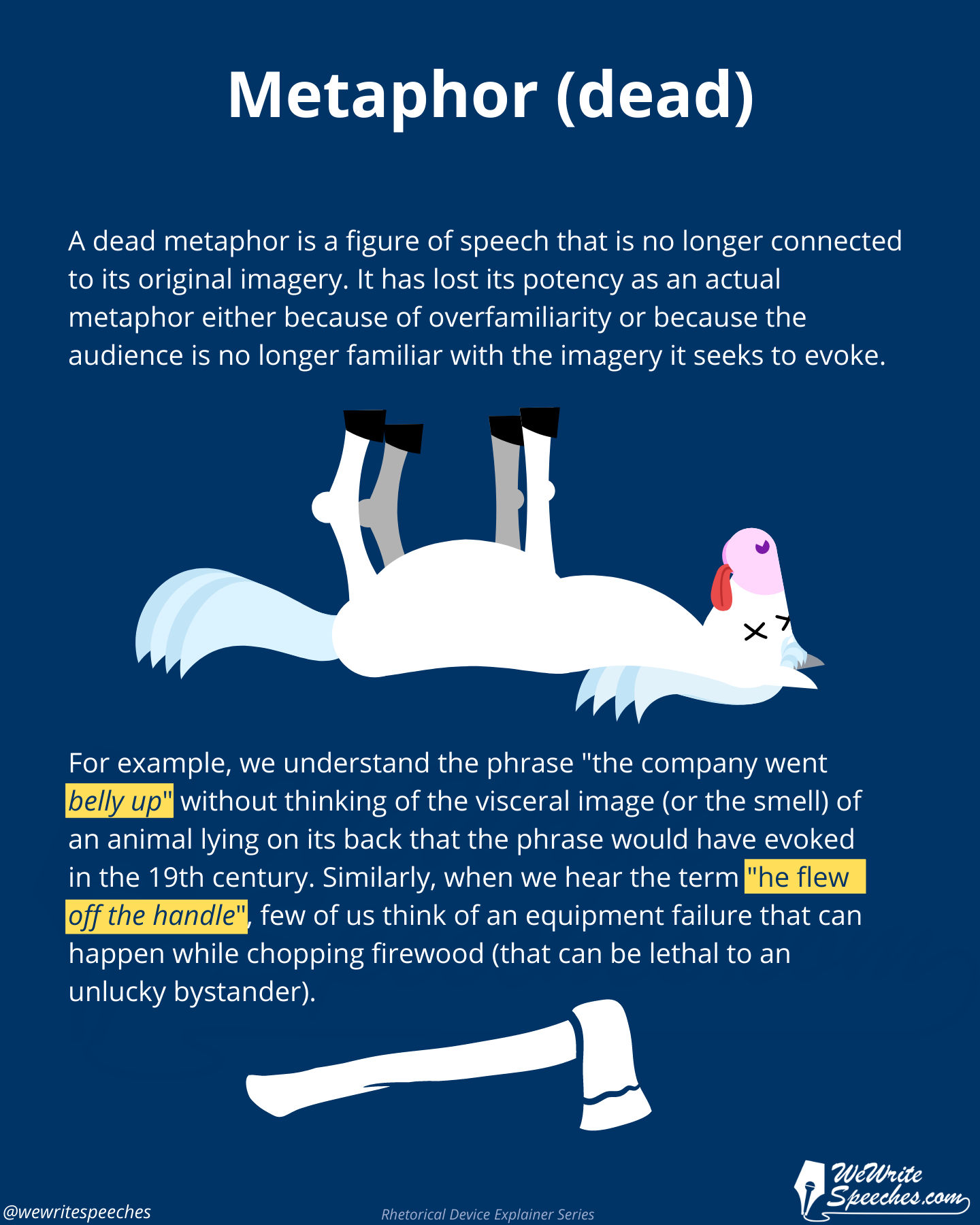Rhetorical Device: Metaphor
A metaphor is a figure of speech which compares two things by saying or implying that one is the other. This is done, not because they are actually the same, but so that the one thing can be explained by invoking the qualities of the other. Metaphors are therefore used to help an audience understand an idea by linking it to something they already know.
Metaphor is closely related to simile and analogy. There are several types of metaphor that are important in public speaking:
- Standard: "she is the light of my life".
- Implied: "she sailed through her exams".
-
Extended:
"You got to know when to hold 'em, know when to fold 'em
Know when to walk away and know when to run
You never count your money when you're sittin' at the table
There'll be time enough for countin' when the dealing's done" - Mixed: "we’ll burn that bridge when we come to it"
- Dead: "he flew off the handle".
These will be explained in more details in the following sections.
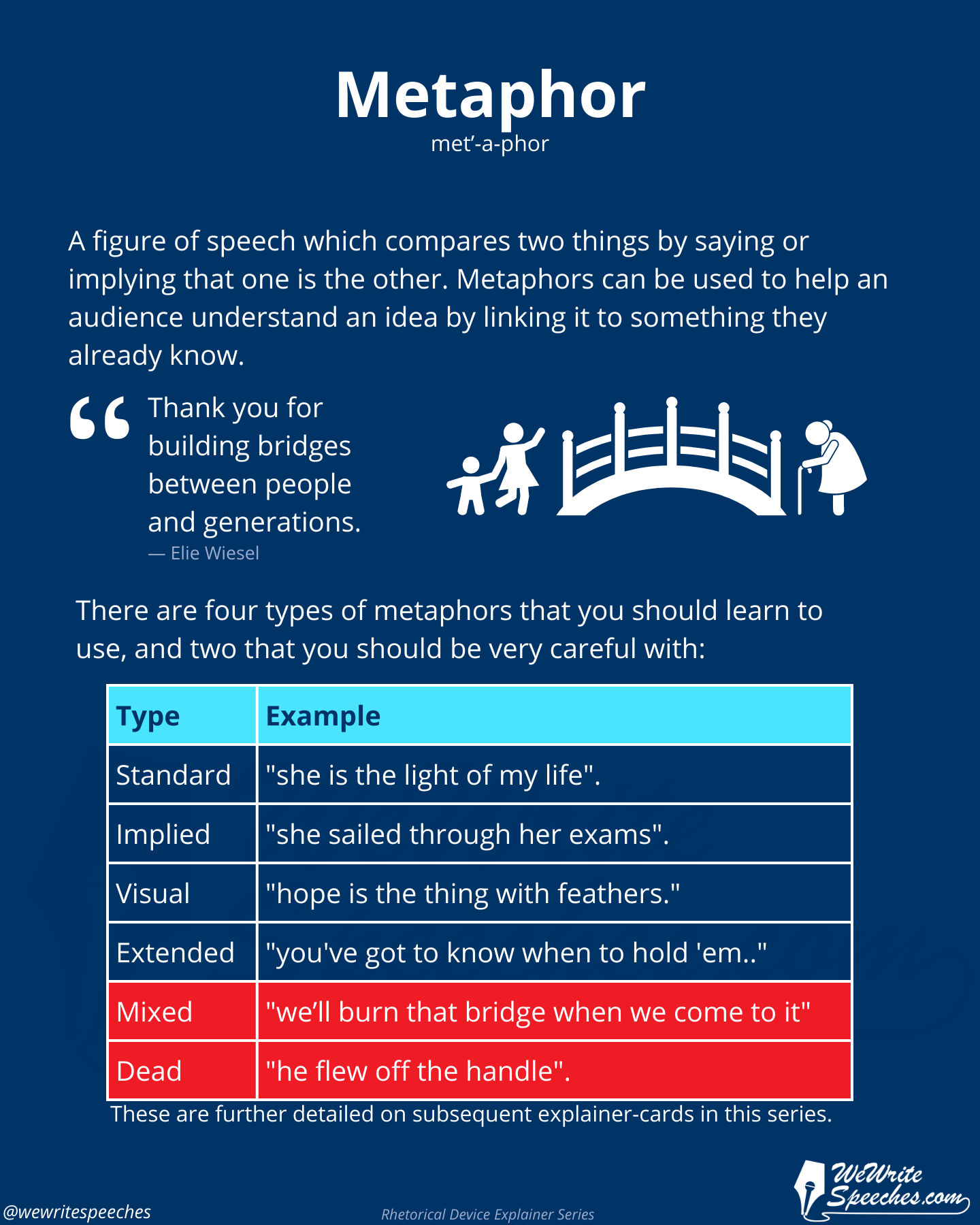
Standard metaphors
A standard metaphor states that one idea is another, making a direct comparison as if the two ideas were synonyms. It uses the basic construction X is Y where X is known as the "tenor" and Y is known as the .All the world's , and all the men and women merely playersWilliam Shakespeare, "As You Like It" (Act 2 Scene 7)
The architecture of world security is fragile and needs to be updated. The rules that the world agreed on decades ago no longer work. They do not keep up with new threats. They are not effective for overcoming them. This is a when you need a coronavirus vaccine. Volodymyr Zelenskyy, "Address to the 58th Munich Security Conference" (19 February 2022)
This is not a closed room. There was an FBI investigation. This is not an opportunity to talk about difficult matters privately or in a closed environment. This is a . It's a national disgrace. Clarence Thomas, "Statement Before the Senate Judiciary Committee" (11 October 1991)
Standard metaphors count for a small minority of the metaphors used in public speaking.
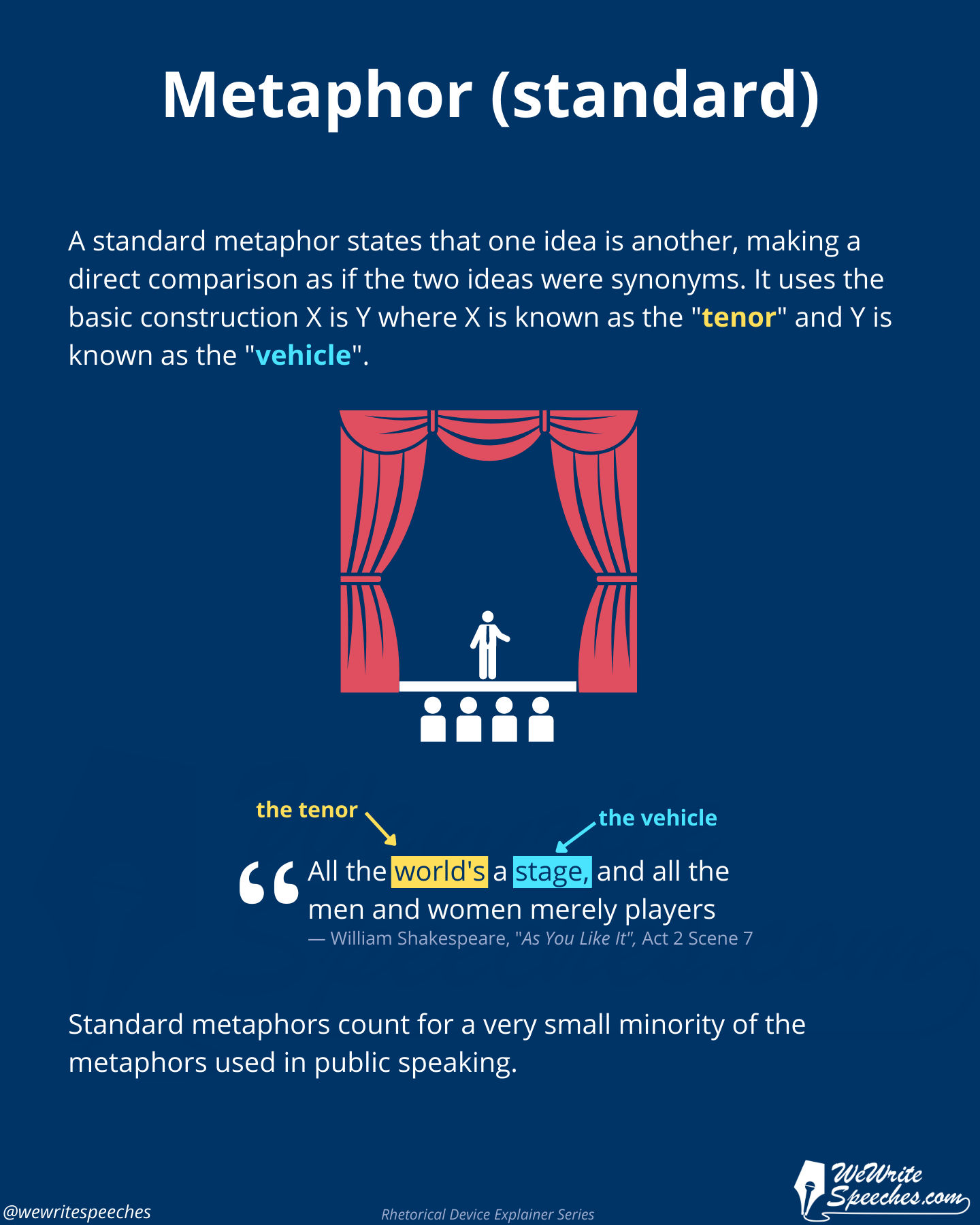
Implied metaphors
An implied metaphor compares two unlike things without identifying one of them. Unlike a direct metaphor which has two parts; the tenor and the vehicle, an implied metaphor normally does not contain the tenor (the thing the speaker is actually talking about).So, thinking in war terms, great men have suddenly discovered that women are "war assets". Indeed, Europe is realizing, as it never did before, that women are holding together the civilization for which men are fighting. the business of nation-building and it has been demonstrated in every European land that it is a partnership with equal, but different responsibilities resting upon the two partners. Carrie Chapman Catt, "The Crisis" (7 September 1916)
I should like to be able to offer the hope that the over the world might swiftly pass. I cannot. The facts compel my stating, with candor, that may lie ahead. Franklin Delano Roosevelt, "Address to Congress" (1939)
In his speech honoring Winston Churchill in April 1963, President Kennedy (borrowing a quote from journalist Edward R. Murrow) implied that the English language was a military resource:
In the dark days and darker nights when England stood alone -- and most men, save Englishmen, despaired of England's life -- he . The incandescent quality of his words illuminated the courage of his countrymen. John F. Kennedy, "Winston Churchill U.S. Citizen Proclamation" (9 April 1963)

Extended metaphors
An extended metaphor is a rhetorical technique that explains a concept by directly mentioning another concept and drawing multiple parallels between them. It allows listeners to visualize a complex message in terms that they are already familiar with.
For example in his " I Have A Dream" speech, Dr. King invokes the image of a check, and then draws on it again and again throughout the following paragraphs. Here are a few lines from that speech:
In a sense we've come to our nation's capital to . When the architects of our republic wrote the magnificent words of the Constitution and the Declaration of Independence, they were signing a to which every American was to fall heir. This note was a promise that all men, yes, black men as well as white men, the "unalienable Rights" of "Life, Liberty and the pursuit of Happiness." It is obvious today that America has , insofar as her citizens of color are concerned. Instead of , America has given the Negro people a , ." But we refuse to believe that the . We refuse to believe that there are of opportunity of this nation. And so, we've come to that will of freedom and the security of justice.Martin Luther King, "I Have a Dream" (28 August 1963)
are bits of colored cloth that governments use first to people’s minds & then as to bury the dead. Arundhati Roy, "Come September" (September 2002)
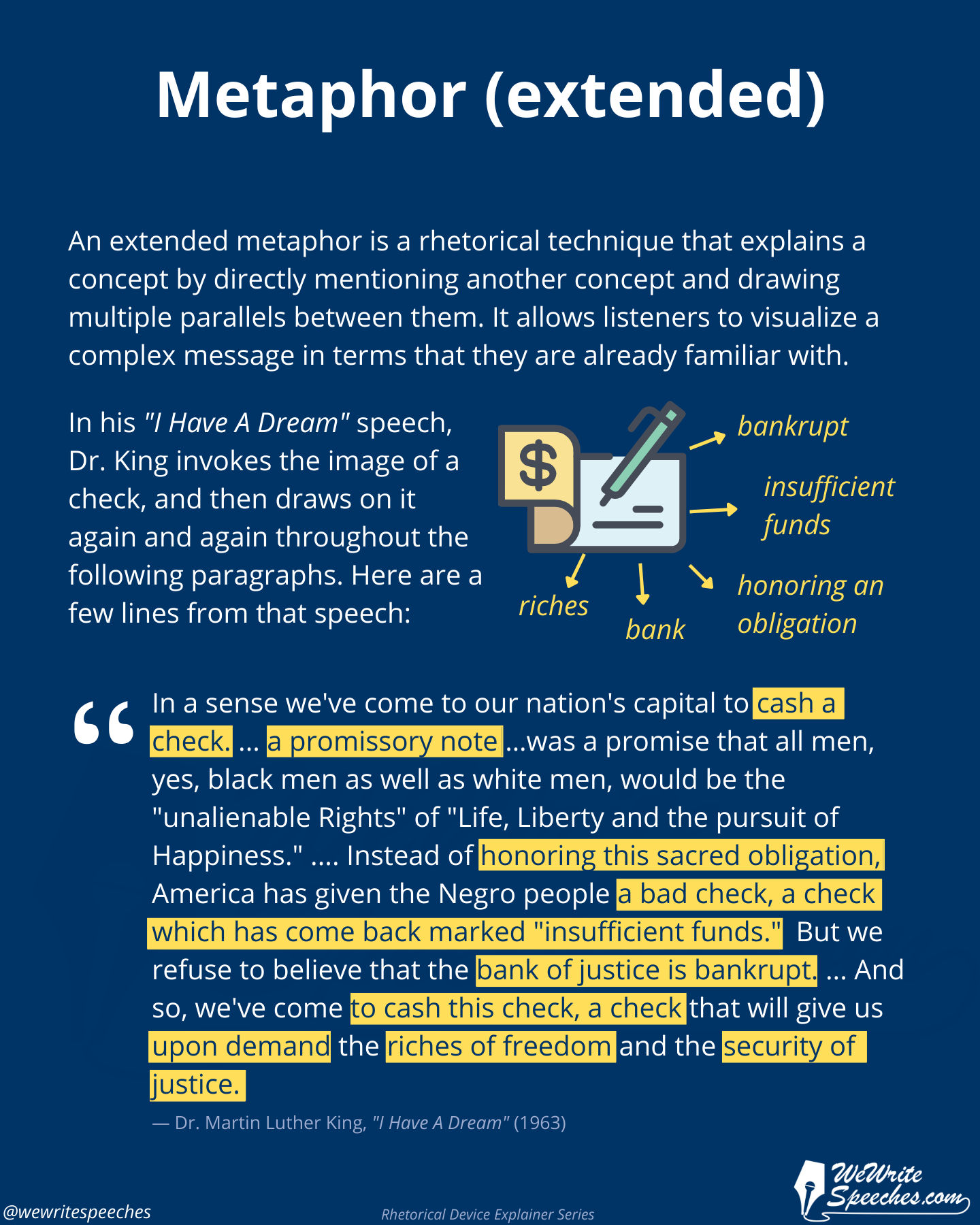
Mixed metaphors
A mixed metaphor is a figure of speech in which the speaker combines two different metaphors that are incompatible. Mixed metaphors can be used for humorous effect but more commonly, they give the impression of disordered thinking. For example when we combine the following two metaphors, we get a mixed metaphor.
- to have egg on ones face means to be embarrassed and made to look foolish. Origins unclear (two theories exist: refers to after-effects of sloppy eating, or alternatively a sub-standard actor who has been pelted with eggs)
- to go cold turkey refers to the abrupt cessation of a substance dependence. Origins also unclear (possibly referring to how turkey is served without preparation, in the days after an enjoyable Thanksgiving dinner)
You can’t go in there . from the website Atkins Bookshelf
Even great orators are capable of mixing their metaphors from time to time:
Each one hopes that if he feeds the crocodile enough, the crocodile will eat him last. All of them hope that . But I fear greatly that the storm will not pass. It will rage and it will roar ever more loudly, ever more widely. Winston Churchill, "The War Situation: House Of Many Mansions" (20 January 1940)
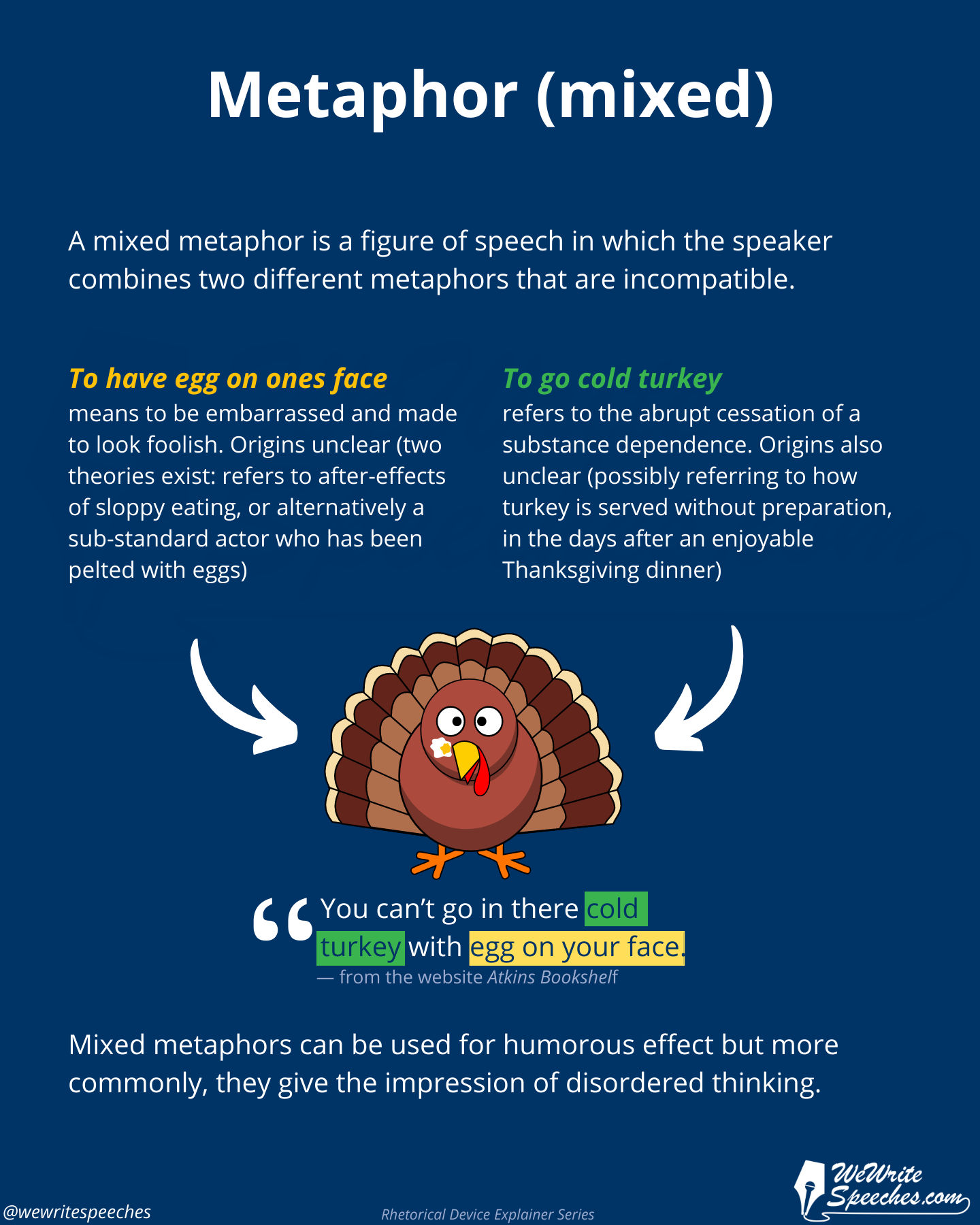
Dead metaphors
A dead metaphor is a figure of speech that is no longer connected to its original imagery. It has lost its potency as an actual metaphor either because of overfamiliarity or because the audience is no longer familiar with the imagery it seeks to evoke.
For example, we understand the phrase "" without thinking of the visceral image (or the smell) of an animal lying on its back that the phrase would have evoked in the 19th century. Similarly, when we hear the term "", few of us think of an equipment failure that can happen while chopping firewood (that can be lethal to an unlucky bystander). Here are a few more examples:
- to dial a phone number
- to hang up the phone
- to roll up the window
- Hold your horses
- Brand new
Further reading
